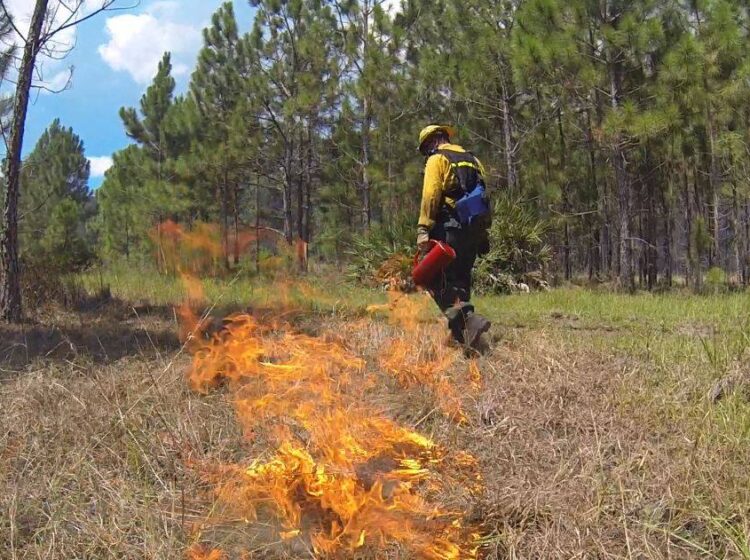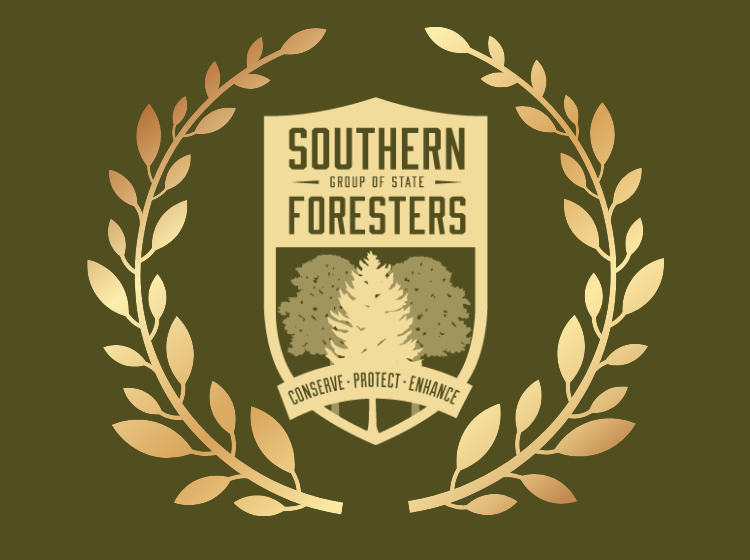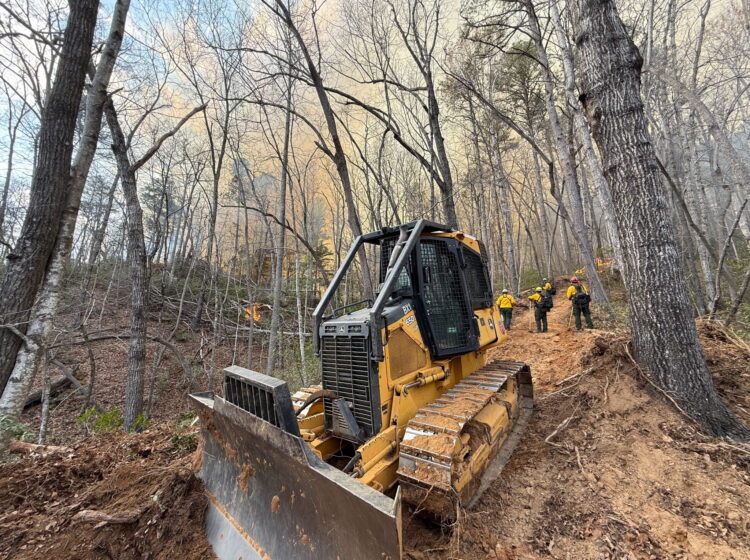Wildland Fire Management
The health and sustainability of the South’s forests are dependent on effective wildland fire management.
State forestry agencies are responsible for protecting 94% of the South’s total land area from wildfires.
The South experiences more wildfires per year than any region in the United States. In 2022, 56% of all wildfires reported in the nation occurred in the South. The region is also home to three of the top four states in the nation with the most Wildland Urban Interface (where homes near nature are more at-risk to wildfire).
Wildfires here are inevitable – It’s not a question of if, but when. State forestry agencies and partners are coordinating across boundaries to develop resilient forests and communities – while protecting life, property and natural resources from the threat of wildfire.
Reducing Wildfire Risk
Recent News
View AllWe are leaders in the application of prescribed fire
The South is known for being a leader in the safe and strategic application of prescribed fire, or “good fire.” Prescribed fire is one of the most efficient and low-cost ways to reduce wildfire risk in the South. By regularly conducting low-intensity prescribed burns, which mimic nature, the buildup of flammable vegetation and overgrowth is reduced and kept at bay. As a result, future wildfires that come through after a prescribed burn are likely to be smaller, easier to control and less dangerous. Other fuel reduction techniques include thinning and mulching. Wildfire risk reduction operations are especially important in areas where homes and businesses exist near nature, otherwise known as the Wildland-Urban Interface (WUI).
By applying these methods regularly, especially in areas of high wildfire risk, future wildfires will be smaller, easier to control and less dangerous for both wildland firefighters and the communities they protect.
Learn More
Addressing the complexities of today’s wildfire management issues
The National Cohesive Wildland Fire Management Strategy (Cohesive Strategy) was adopted in the South and across the nation to address the complexities of today’s wildfire management issues.
The Cohesive Strategy is a strategic push to work collaboratively among multi-jurisdictional stakeholders to restore and maintain landscapes, ensure communities are ready for wildfire and build partnerships to improve wildfire response.
Learn more about shared stewardship and the implementation of the Cohesive Strategy in the southeast region in our collection of Cohesive Strategy Success Stories from across the South.
Southeastern Cohesive Strategy
Wildland Firefighting and Emergency Response
Suppression tactics and equipment
Wildfires are typically suppressed by constructing firebreaks, or fire lines, by removing flammable material down to bare mineral soil to halt the spread of fire. In the South, a tractor-plow unit, consisting of a modified bulldozer equipped with a plow and blade, is often used to create firebreaks. In more mountainous terrain, however, tractor plow units may not be able to operate safely. In these cases, trained crews will use hand tools (axes, shovels, fire rakes) to manually construct firebreaks. Drip torches are often used to widen firebreaks by burning fuels between ahead of the oncoming wildfire.
Air Operations
Forestry pilots relay important information to wildland firefighters about fire behavior, fuels, obstacles and structures threatened. When special situations arise, aerial tankers and helicopters are available from other sources to assist by dropping water or suppressant on fires.
Incident Command
The incident Command System (ICS) is a well-organized team approach that enables responders quickly establish (and transfer) chain-of-command and manage personnel, resources and communications, no matter the size or scale of the incident.
Among the southern states, state forestry agencies together maintain seven all-hazard IMTs. These teams are fully staffed and self-contained, and are experienced in wildland fire operations, planning, information, logistics, finance and safety. These teams are made up of staff from various southern states and cooperating agencies – some teams consisting of nearly 60 members each.
Incident Deployments
State forestry agencies approach deployment through a formalized partnership with federal land management agencies. This agreement allows for efficient sharing and exchange of resources and funds to support wildfire management and response across the country. State forestry agencies will allow out-of-state deployments only after determining that doing so will not add undue risk to their home state.
States in the South may also deploy within the region under an established wildland fire compact agreement, which enables participating agencies to send resources and personnel quickly and efficiently across state lines to suppress wildfires. When activated, compact agreements can provide a more accessible system for sharing regional resources and for state-to-state reimbursements.
Southern Area Coordinating Group
The Southern Area Coordinating Group, which works together to further interagency cooperation, communications and coordination, and to provide interagency fire management direction and all-risk support for the Southern Area.
Resources
Community Wildfire Defense Grants
Wildfire Risk in a Changing Environment
Storymap illustrating risks to people and ecosystem services
Southern Wildfire Risk Assessment Portal (SouthWRAP)
SouthWRAP provides a consistent, comparable set of scientific results to be used as a foundation for wildfire mitigation and prevention planning in the southern states.
Benefits of a Prescribed Fire
Infographics highlighting the many benefits of prescribed fire.
7 Benefits of Prescribed Fire Infographic (vertical)
7 Benefits of Prescribed Fire Infographic (horizontal)
Benefits of Prescribed Fire Graphic 1 of 9
Benefits of Prescribed Fire Graphic 2 of 9
Benefits of Prescribed Fire Graphic 3 of 9
Benefits of Prescribed Fire Graphic 4 of 9
Benefits of Prescribed Fire Graphic 5 of 9
Benefits of Prescribed Fire Graphic 6 of 9
Benefits of Prescribed Fire Graphic 7 of 9
Benefits of Prescribed Fire Graphic 8 of 9
Benefits of Prescribed Fire Graphic 9 of 9
Conducting a Prescribed Fire
Infographics illustrating the application of prescribed fire.
Conducting a Prescribed Fire Infographic (horizontal)
Conducting a Prescribed Fire Infographic (vertical)
Pre-Burn Planning (1 of 4)
Burn Preparation (2 of 4)
Executing the Burn (3 of 4)
Monitoring and Evaluating (4 of 4)
Guidebook for Prescribed Burning in the Southern Region
The Guidebook for Prescribed Burning in the Southern Region is designed to help prescribed burners of all experience levels set and meet their goals.
Southern Wildland Fire Strategy
Southern Wildland Fire Strategy coordinates and supports the implementation of the National Cohesive Strategy in the Southeastern Region.
National Cohesive Wildland Fire Management Strategy
The National Cohesive Wildland Fire Management Strategy is a national effort to work collaboratively among stakeholders to achieve Wildland Fire Management goals.
Southeastern Cohesive Strategy Success Stories
SouthernWildfire.net is an online resource for southeastern Cohesive Fire Strategy information and news and to provide tools and resources to professionals and the public that can increase landscape resiliency, protect communities and ensure a safe, effective and risk-based fire response.
Southern Area Coordination Center (SACC)
SACC is an all-risk coordination center which provides support in response to wildfire incidents and other emergencies such as floods, hurricanes and earthquakes.
National Interagency Coordination Center
The National Interagency Coordination Center is the focal point for overseeing all interagency coordination activities throughout the United States.
National Wildfire Coordinating Group
The National Wildfire Coordinating Group provides national leadership to enable interoperable wildland fire operations among federal, state, local, tribal, and territorial partners.
Fire Adapted Communities
Learn about fire adapted communities, find tools and resources, and get inspired by community wildfire adaptation work across the country!
Fire Adapted Learning Network
Fire Adapted Learning Network provides support and networking for people and communities working on wildfire resilience.
Ready, Set, Go!
The Ready, Set, Go! (RSG) Program seeks to empower fire departments to engage the residents they serve in wildland fire community risk reduction.
FireWise USA®
The national Firewise USA® recognition program provides a collaborative framework to help communities reduce their wildfire risk.
Targeted Audience Messaging Within the Wildland-Urban Interface
Research report on existing messages that are relevant to members of the public who live or work within the WUI.
Human influences on forest ecosystems: the southern wildland-urban interface assessment
Review critical wildland-urban interface issues, challenges and needs for the Southern United States.
Tire Safety
Refresher information for wildfire crews on tire safety.
Safecar.gov info sheet
Tire safety information from NHTSA.
Tire Information
Tire safety information from the U.S. Department of the Interior.


